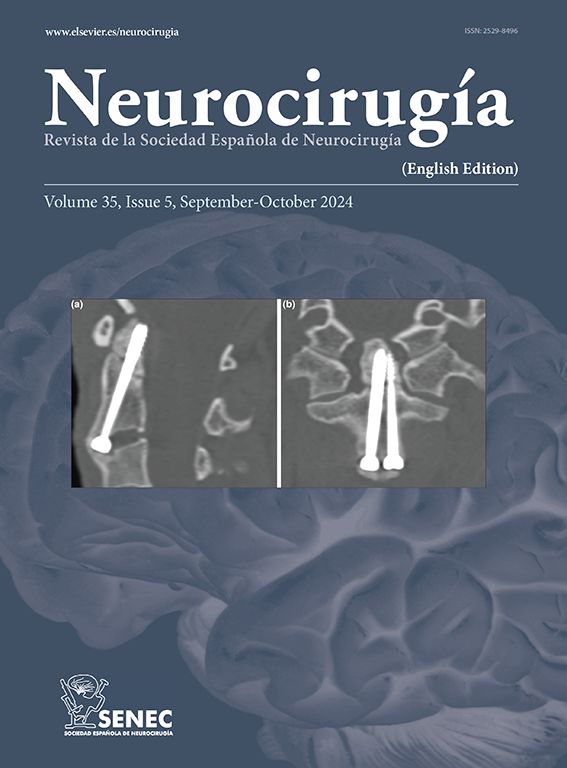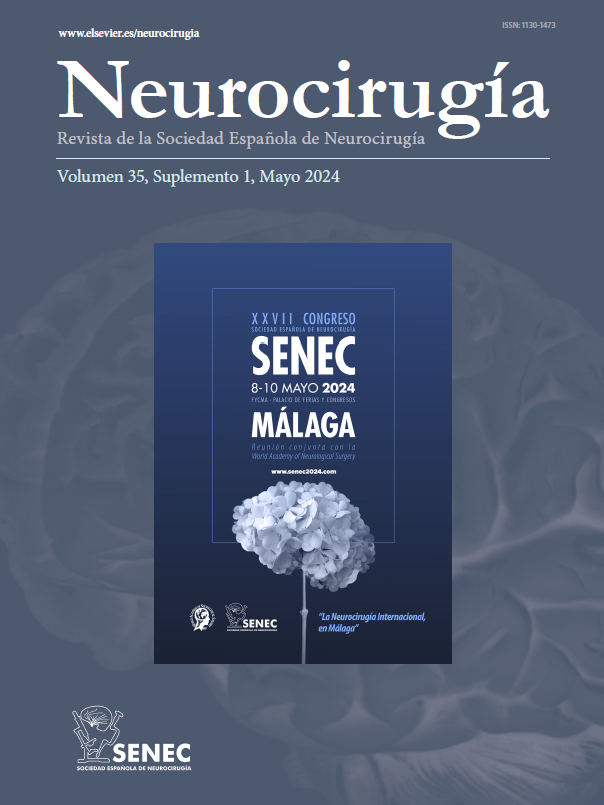Creación de una base de datos de pacientes que han sufrido un traumatismo craneal grave (TCEG), que permita realizar una adecuada evaluación clínico-radiológica, identificar factores pronósticos y establecer las bases para futuros ensayos clínicos.
Material y métodosSe incluyen 810 pacientes con TCEG, ingresados consecutivamente en Hospital 12 de Octubre, entre 1987 y 1992. Unicamente se excluyeron pacientes menores de 15 años y aquellos con herida por arma de fuego o con grave inestabilidad hemodinámica a los que no se pudo realizar TC antes del fallecimiento. Se eligió para la evaluación clínica inicial la mejor puntuación en la Escala de Coma de Glasgow (ECG). Se definen las distintas variables demográficas, clínicas, radiológicas y de monitorización, correlacionándose éstas con la evolución final. Comparamos nuestros resultados con otras series actuales de manejo del TCEG.
ResultadosLa mortalidad global fue del 49,5%, siendo ésta más frecuente en pacientes que sufrieron caída (62,5 %), pacientes con una puntuación en la Escala de Coma de Glasgow tras resucitación de 3 (93%) ó 4 (73 %), midriasis bilateral (94,8 %), TC al ingreso Tipo IV (85,4%) o Tipo VI (100%) de la clasificación del “Traumatic Coma Data Bank” (TCDB) y en pacientes en los que se evacuó un hematoma subdural (66,6%).
ConclusionesUna base de datos de pacientes con TCEG, recogida de forma “estandarizada”, con variables claramente definidas, con un número amplio de casos, ofrece la posibilidad de mejorar el conocimiento de esta patología. Al comparar la evolución final en series con un elevado número de casos, se ha encontrado que existe una gran variabilidad, dependiendo ésta fundamentalmente de las características y definición de las variables empleadas para describir la población incluida en el estudio.
To create a Data Base of patients with severe head injury (SHI), that allows an appropiate clinical and radiological evaluation, the definition of prognostic factors and setting the basis for prospective clinical trials.
Methods810 patients with SHI consecutively admited to the Hospital “12 de Octubre”, between 1987 and 1992 were included. Patients under 15 years of age and those with gunshot wounds or severe hemodynamic unstability, precIuding CT scan examination before death, were excIuded. The most relevant clinical and radiological characteristics were sharply defined, and correlated with the final outcome. Our results are compared with other large series of SHI reported in the literature.
ResultsOverall mortality rate was 49,5%. Fatal outcome was more frequent in patients suffering falls (62,5% mortality), patients with a GCS score of 3 (93 %), or 4 (73 %), patients with bilateral abnormal pupils after resuscitation (94,8 %), patients showing midline shift in the initial CT scan (85,4%) or non-evacuated mass (100%) and in patients operated for a subdural hematoma.
ConclusionsA properly collected data base with sharply defined variables and an appropriate number of cases may improve our understanding of the clinical profile and the physiopathology of SHI. When comparing large series of SHI, we found marked differences in the final outcome, which seem to be due to the great variability in inclusion criteria and thus the profile of the population of patients included in those studies.
Article

If it is the first time you have accessed you can obtain your credentials by contacting Elsevier Spain in suscripciones@elsevier.com or by calling our Customer Service at902 88 87 40 if you are calling from Spain or at +34 932 418 800 (from 9 to 18h., GMT + 1) if you are calling outside of Spain.
If you already have your login data, please click here .
If you have forgotten your password you can you can recover it by clicking here and selecting the option ¿I have forgotten my password¿.






